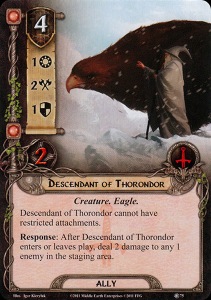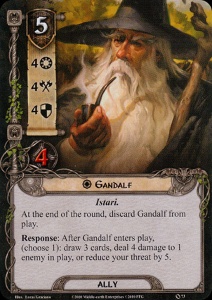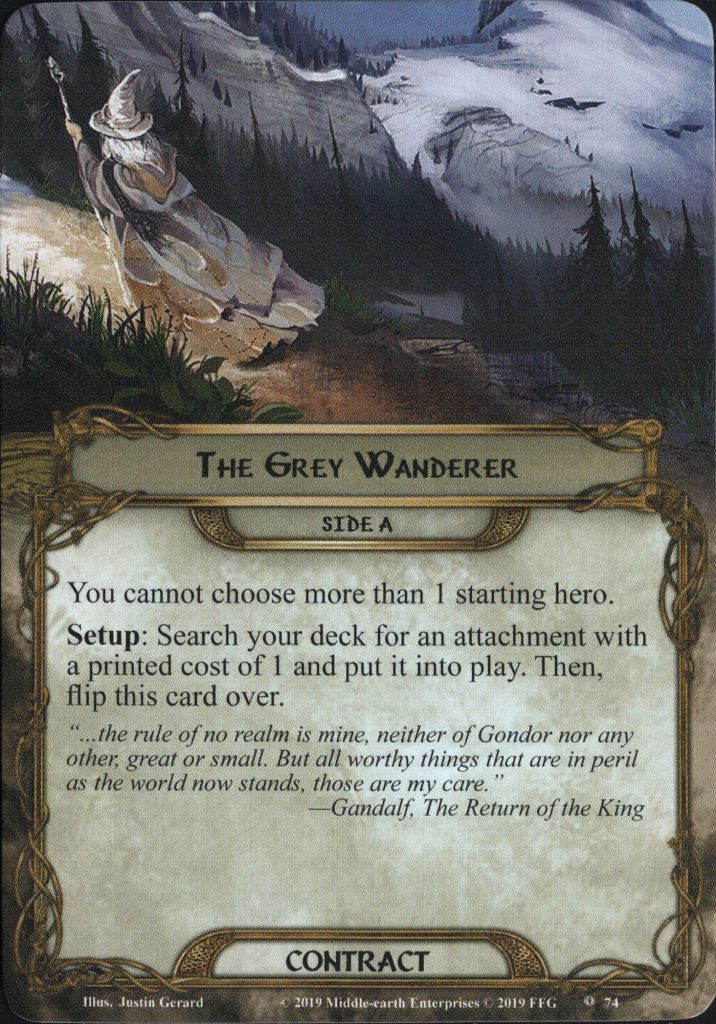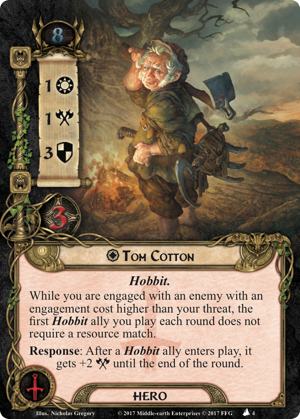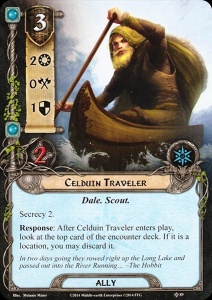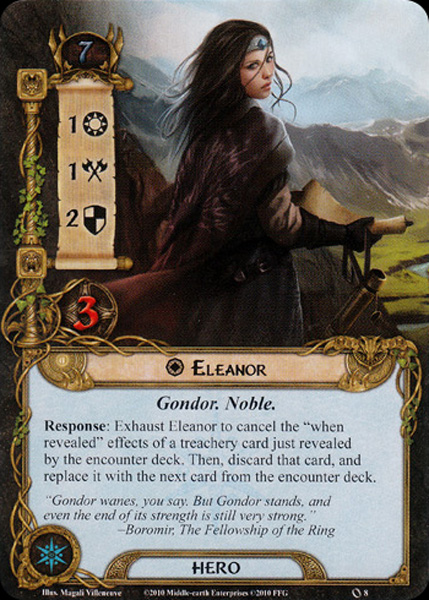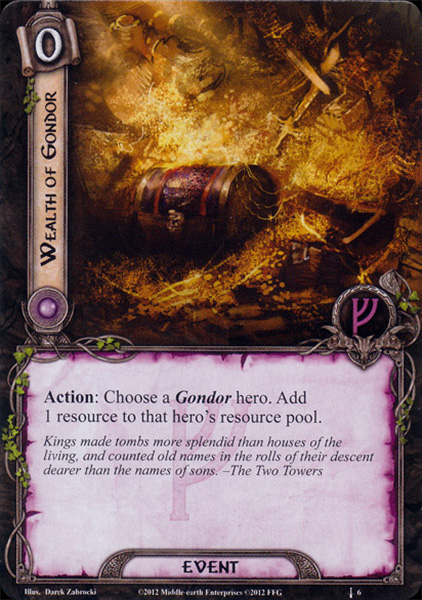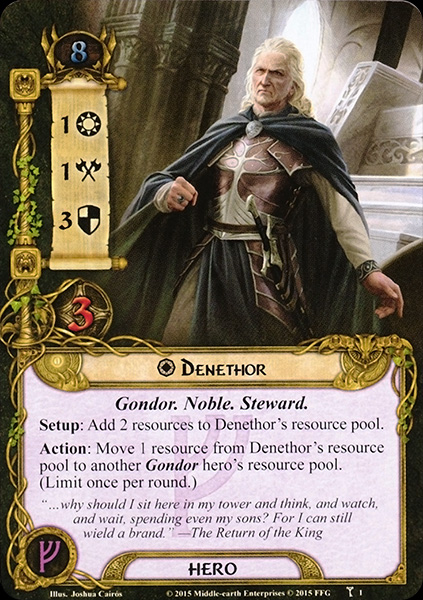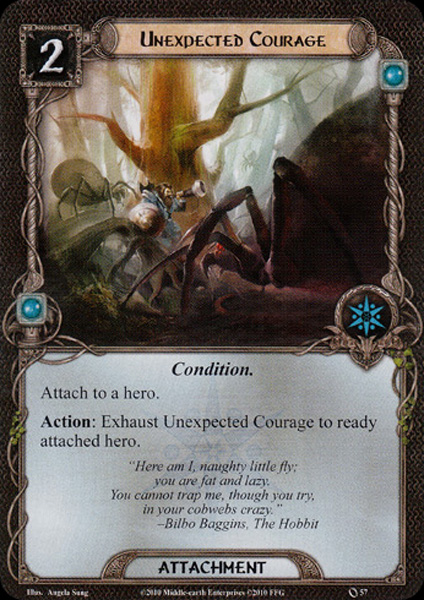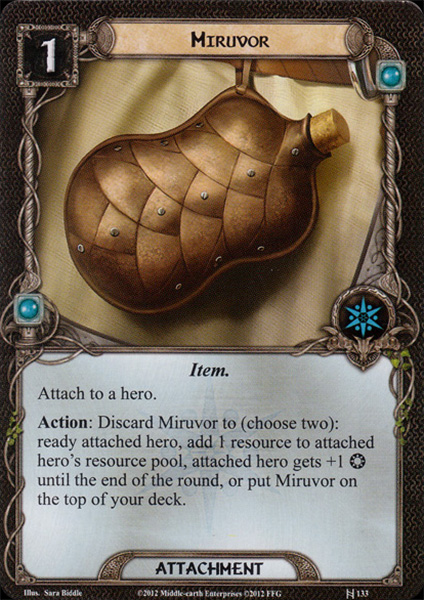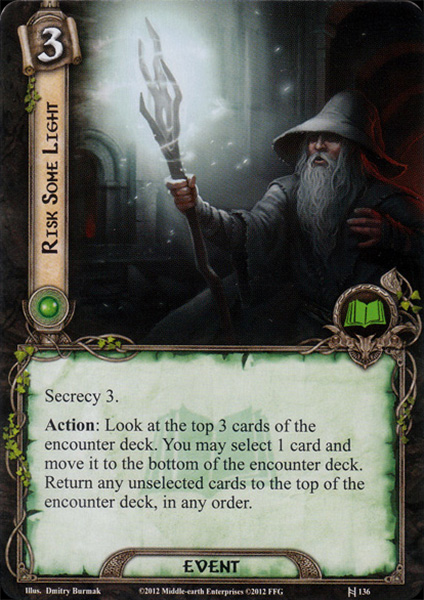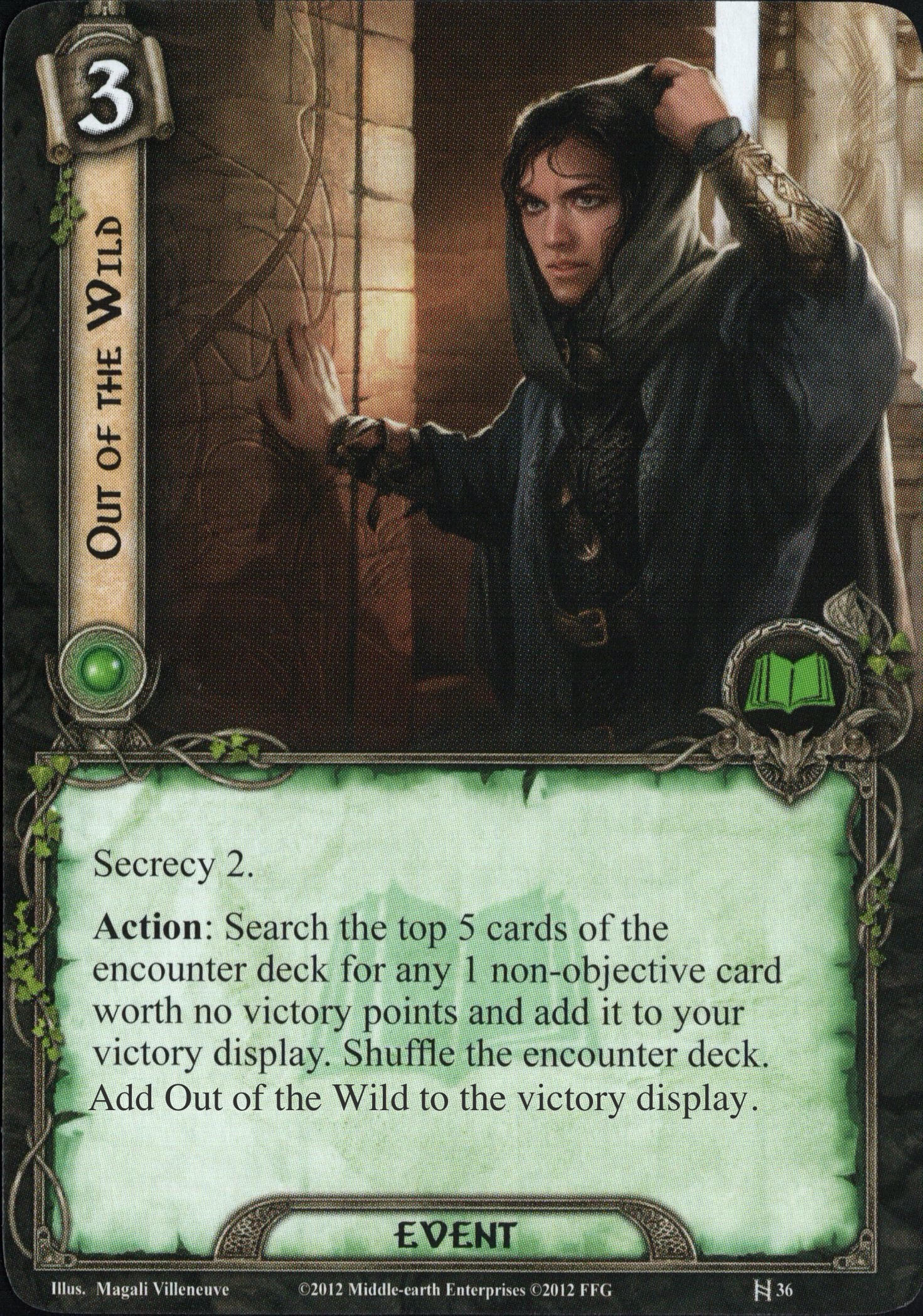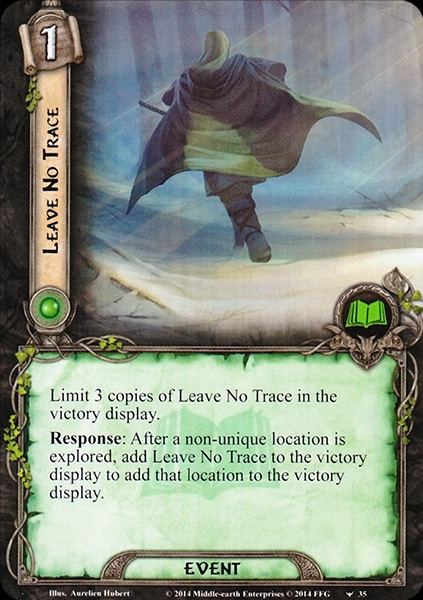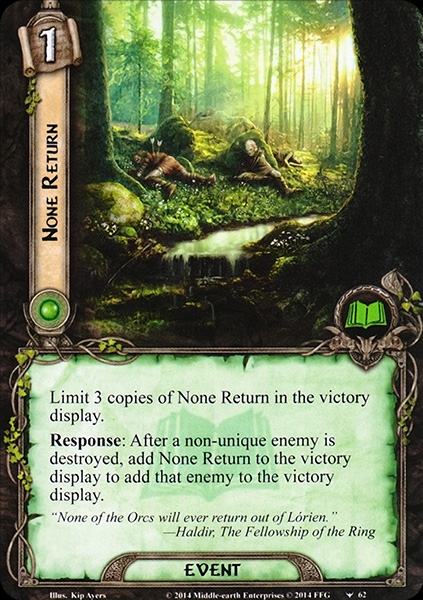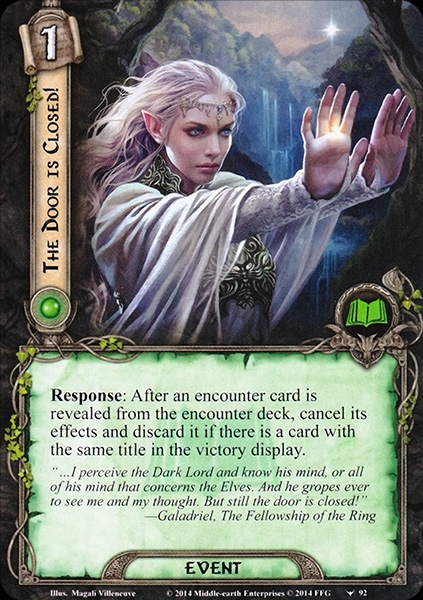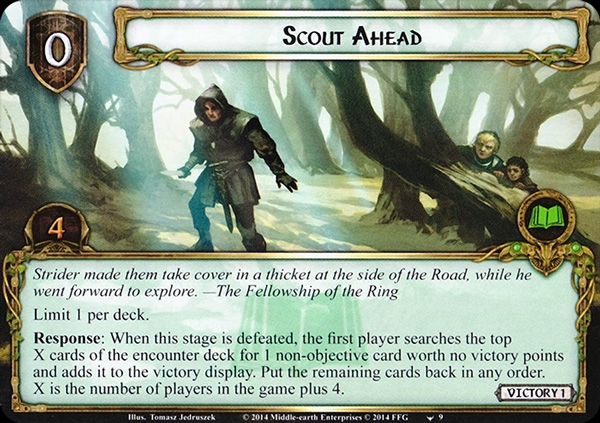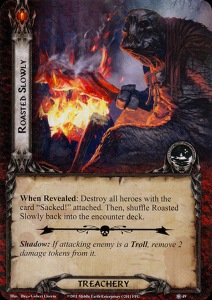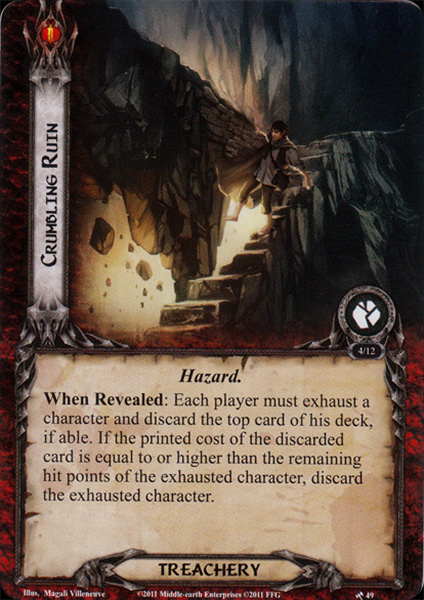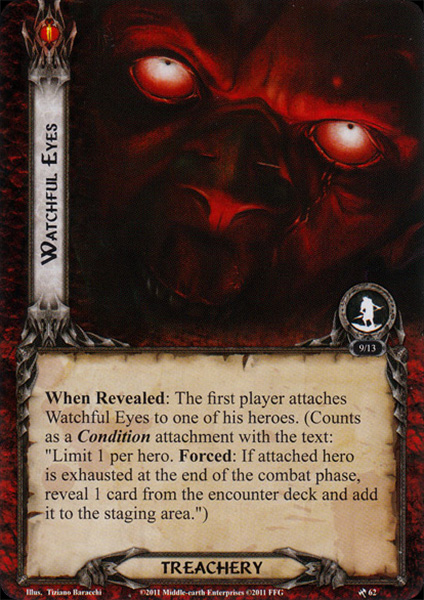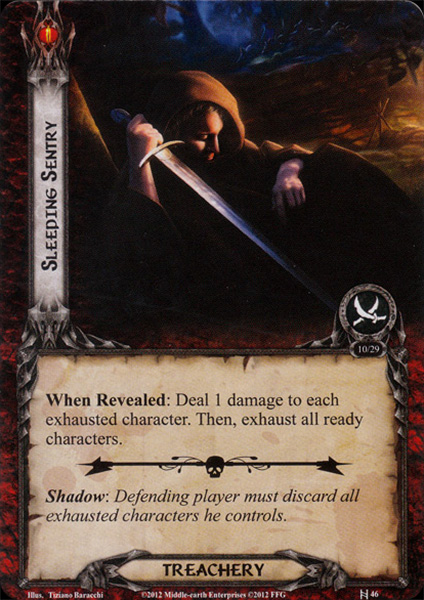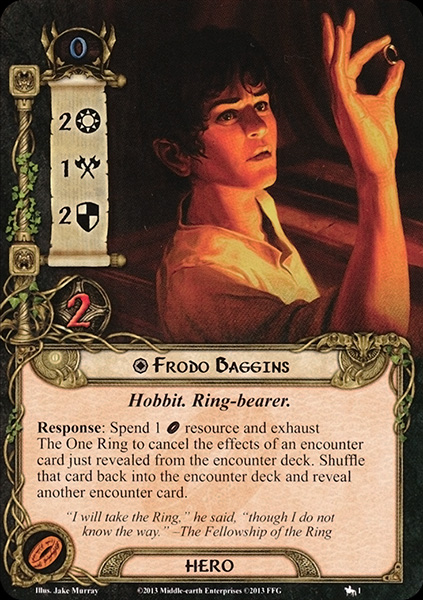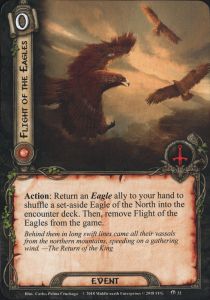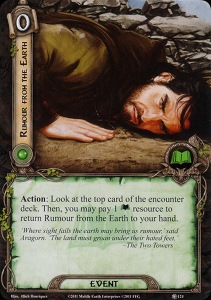- Card Talk Season 6 Episode 8
- Cycle
- Shadows of Mirkwood
- Set
- Core Set and Revised Core Set
- Player Card Categories
- Encounter Scrying
- Encounter Control
- Messenger of the King
True solo king
Background
Henamarth appears to be a character created by FFG as there is no mention of him in any of the books. Presumably he is one of the elves of Mirkwood that lived in the Woodland Realm under King Thranduil. This assumption comes from that the Core Set is part of the Shadows of Mirkwood cycle and set in and around Mirkwood. It is still quite possible he is one of the Galadhrim Silvan elves as there many different peoples of Middle Earth represented therein.
Card Theme
Knowing little of Henamarth, there is really only the card art to go by. He is all dressed in various shades of green seemingly to blend in better with the grass and forest around him. He has hand raise shielding his eyes as if trying to see something in the distance. It appears he is being depicted as a scout or sentry of some kind. In either case, seeing dangers before they are generally known fits well with his ability to see the top card of the encounter deck.
Card Synergies and Interactions
Quest Control / Willpower Bonus
Henamarth is a true solo king because knowing the top encounter card gives a player the exact staging area threat they’ll be questing against most of the time. That is barring surge and other similar effects that would lead to another card being revealed or added.





This allows the true solo player to send exactly amount of necessary willpower or hold back enough characters for combat. Willpower bonus abilities that be added are still good to have. These allow the player to use their characters more efficiently and keep as many as possible open for combat.
Encounter Control
There are a number of cards that trigger based on when a certain kind of card is revealed during staging. Thalin from the Core Set is an example of the later and works really well with Henamarth. Thalin’s 1 willpower is not that helpful for questing. A player knowing when to send him, especially in true solo, to trigger his ability versus hold him back to use his 2 attack or 2 defense is much more efficient. Expecting Mischief is very similar to Thalin but being a one time event is much riskier to play blindly. Warden of Arnor being the location version of Thalin can ensure that the Scout hero is only questing when needed. Spirit Merry hero and can quest if Henamarth shows no enemy is expected in true solo. There are also a few cards like Leadership Gimli ally, Leather Boots, and Wingfoot that can ready a character depending on the card revealed. Henamarth can ensure a player knows when the ready will be triggered and send them to the quest without worry.
There are also a few cards that trigger based on looking at the top card of the encounter deck. The Longbeard Elder gets to do a little location control if the top card is a location. The Ithilien Lookout can help set that up with his response to discard the top encounter card if it is an enemy. That would also allow the player to draw a card when playing a Cautious Halfling. Otherwise the Celduin Traveler can get rid of the top location if the player(s) don’t like it.
Messenger of the King
Henamarth as a Messenger of the King (MotK) hero doesn’t bring much in stats, but the threat cost of 3 is prime to enable Secrecy. The biggest problem with Henamarth as a MotK hero is his 1 health. He is only a single undefended attack or direct damage from a treachery away from dying. There is Elven Mail to give him 2 more hit points. Still very risky and potentially lose a Lore resource per round. Gleowine for the same threat cost can quest for the same, has 2 hit points, and can draw a card. Gleowine for the cost seems to be a better pick than Henamarth.
Silvans




Henamarth doesn’t have the enter play effects of the later Silvan allies that came out in the Ringmaker cycle. He can still benefit from Celeborn’s stat boosting ability and the cost reduction offered by O Lorien!. Galadriel synergizes well with him too since he can quest when he comes into play and still be ready to use his ability. Targeting him with The Tree People is a decent option since he is cheap to replay.
Silvans also have a few attachments that can played on allies. Generally they’re better on the stronger Silvan allies like Legolas or Marksman of Lorien or a Silvan hero. They’re still an option to make Henamarth into a ranged attacker that lowers enemy defense by 2 or potentially a secondary defender for weaker enemies with 1 defense and 3 hit points from Elven Mail and Cloak of Lorien. Silvan Trackers can heal off any damage taken quite easily.
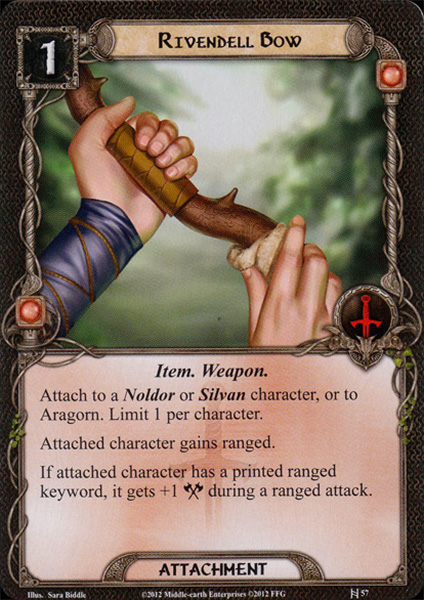



Ring Rating
Card Talk uses the highly scientific yet arbitrary scale of 1 ring for the card to rule them all to 10 to be cast back into the fiery chasm from whence it came.
I rate Henamarth at 2 rings. He is cheap to play, gives the player 1 willpower or 1 attack, and has a useful ability. Worst comes to worst, a player can always chump block with him as well. Just tremendous value for his cost.
Then his ability is just so strong in true solo. Knowing exactly what the staging area will have most turns allows a player to split their heroes and allies most efficiently between questing and combat. If there is a treachery, foreknowledge of its effect can let a player play around it. For example, knowing the top encounter card is Necromancer’s Reach that will deal a damage to each exhausted character, then the player can just commit characters that have more than 1 hit point remaining. His ability can also help in defending because it can show what the first shadow card will be. That foreknowledge can make the difference between losing a defending hero and losing a cheap ally in their place.
The low cost means he can slot into just about every deck with Lore. He doesn’t synergize perfectly with the Silvan cards that came later, but he still works with them although there might be better options. There isn’t really any downside to him. If I’m not playing him in a deck with Lore then it is because it is built around a theme or trait.
- Dave – 3
- Grant – 2
- Ted – TBR
- Matt – 2
- Average 2.33
External Links
Sample Decks
Pretty Fly for a Scry Guy by Durins Father
An encounter scrying deck full of direct damage effects. The direct damage is meant to kill enemies as soon as possible after they’re revealed in staging.
Main Deck
Hero (3)
Damrod (The Land of Shadow)
Denethor (Core Set)
Thalin (Core Set)
Ally (14)
2x Anborn (The Blood of Gondor)
2x Descendant of Thorondor (The Hills of Emyn Muil)
2x Henamarth Riversong (Core Set)
2x Ithilien Tracker (Heirs of Númenor)
2x Marksman of Lórien (The Drowned Ruins)
2x Master of Lore (Heirs of Númenor)
2x Warden of Healing (The Long Dark)
Attachment (16)
2x A Burning Brand (Conflict at the Carrock)
2x Ambush (The Land of Shadow)
2x Forest Snare (Core Set)
2x Gondorian Shield (The Steward’s Fear)
2x Ithilien Pit (Encounter at Amon Dîn)
2x Poisoned Stakes (The Blood of Gondor)
2x Protector of Lórien (Core Set)
2x Ranger Spikes (Heirs of Númenor)
Event (27)
2x Arrows from the Trees (Temple of the Deceived)
3x Behind Strong Walls (Heirs of Númenor)
3x Daeron’s Runes (Foundations of Stone)
3x Deep Knowledge (The Voice of Isengard)
3x Expecting Mischief (Over Hill and Under Hill)
3x Feint (Core Set)
2x Forest Patrol (Assault on Osgiliath)
2x Infighting (A Journey to Rhosgobel)
2x Interrogation (The Drowned Ruins)
2x Risk Some Light (Shadow and Flame)
2x Rumour from the Earth (Return to Mirkwood)
Player Side Quest (1)
1x Scout Ahead (The Wastes of Eriador)
3 Heroes, 58 Cards
Cards up to The Drowned Ruins
Decklist built and published on RingsDB.

























